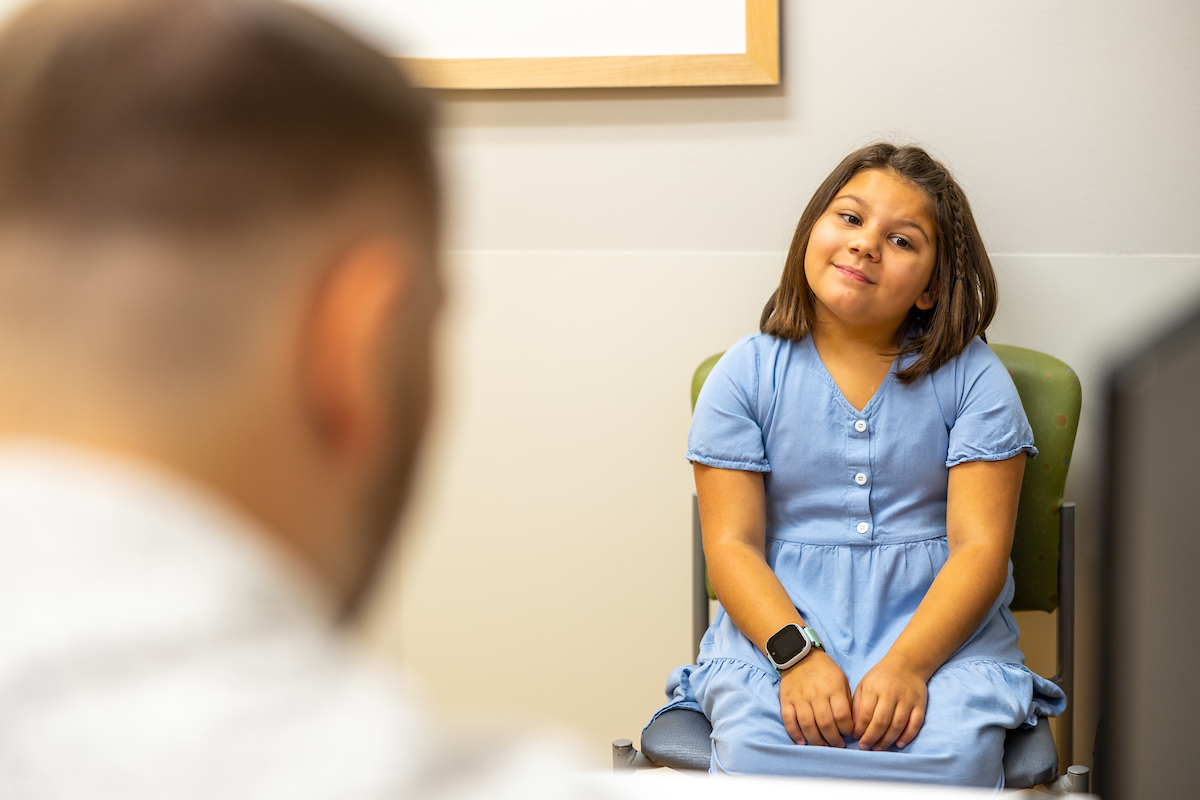Legg-Calvé-Perthes Disease Symptoms and Effects
If your child has Legg-Calvé-Perthes disease (often shortened to simply Perthes), symptoms may include:
- Pain in any of the following areas: groin, hip, inner thigh, or knee.
- Limping, perhaps without a known cause or injury.
- Limited hip range of motion.
How is Perthes disease diagnosed and treated?
As leaders in pediatric orthopedics, skilled orthopedic surgeons at Gillette Children’s are experts in diagnosing and treating Perthes.
An orthopedic surgeon may take a history, perform a physical exam, and use common radiology services like X-ray to diagnose Perthes disease. MRI is sometimes recommended.
Depending on your child’s age, the severity of the condition, and the family’s preference, treatment recommendations may vary, ranging from non-surgical to surgical options.
The main goals of Perthes disease treatment are:
- Maintaining the ball-like shape of the femoral head – often using the socket portion of the hip as a mold.
- Maintaining adequate range of motion of the hip.
- Keeping the ball of the hip well-contained within the socket during the healing process.
- Keeping your child as comfortable as possible and managing their pain.
Orthopedic surgeons may recommend any combination of the following treatments for Perthes, including:
Non-surgical options:
- Observation – especially for children 5 years of age or younger.
- Pain management including non-steroidal anti-inflammatory drugs (e.g. ibuprofen).
- Limiting physical activity levels (e.g. running and jumping) to prevent further damage to an already weakened bone.
- Limited weightbearing – possibly using crutches, walker, or wheelchair.
- Physical therapy exercises to maintain hip range of motion.
- Bracing or casting to help regain hip motion.
Surgical options:
- Surgery may be performed to reposition the ball-like portion of the hip toward the socket portion of the hip joint. This repositioning uses the hip socket to help mold the healing hip into a more spherical shape during recovery.
- Soft tissue procedures to help regain motion.
- Surgery near the socket portion of the hip to help give better containment of the ball-like portion.
- Use of an external frame device to help regain motion and limit forces across the hip joint.
- Drilling of the ball-portion of the hip to help stimulate blood flow (only used in older children).
Once your child’s hip has healed completely, the disease is unlikely to return, but the hip may retain an abnormal shape. Gillette orthopedic surgeons continually see and monitor progress in children with Perthes until they stop growing and reach skeletal maturity. Once the hip has healed, other surgical procedures may be indicated if the hip continues to be problematic due to non-spherical shape or due to limitations in hip function.
What Sets Gillette Apart in Perthes Care
Gillette sees a relatively large number of patients with Legg-Calvé-Perthes disease every year. In fact, we have a dedicated Perthes orthopedic clinic twice per month – one in Saint Paul and one in Maple Grove – for Perthes patients and families. We are actively involved in Perthes-specific research and are happy to discuss possible research opportunities if patients or families are interested.
 Home Page
Home Page



